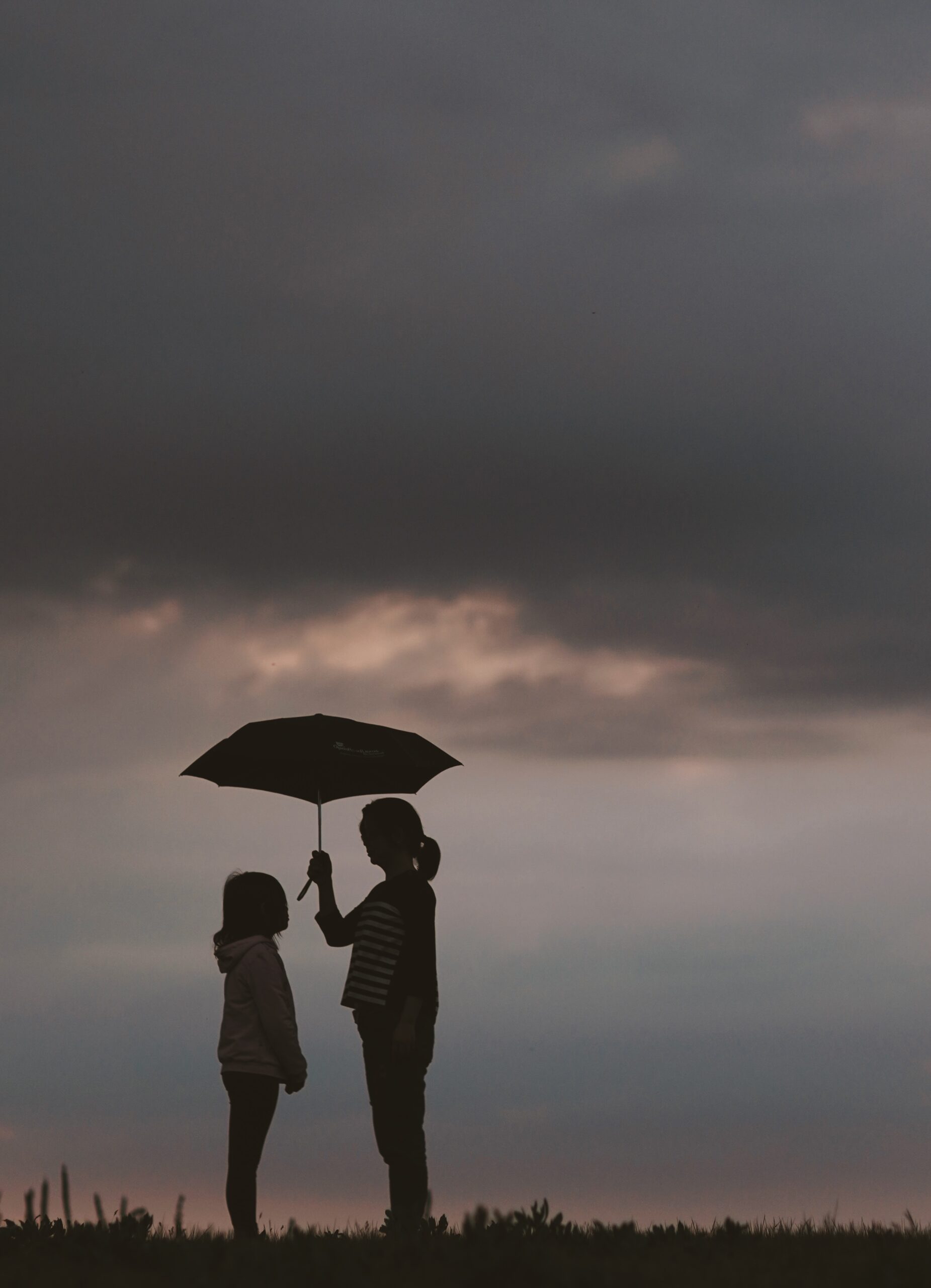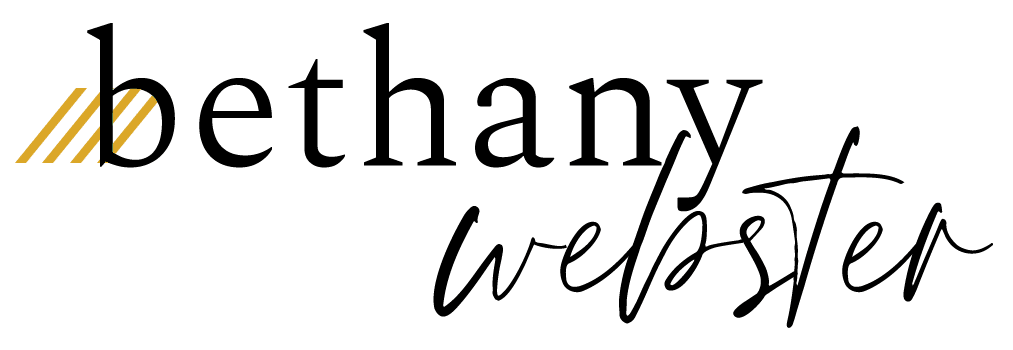Why Are Some Mothers Abusive To Daughters?

Many adult women experience ambivalent and strained relationships with their aging mothers, a kind of low-level or chronic, painful entanglement. This strain between mothers and daughters is pervasive, complicated, and still rather taboo. Women may lightly joke with one another about their mothers but endure seriously painful dynamics that never seem to get fully resolved, only endured. This mother-daughter strain can be particularly acute around Mother’s Day when the culture plays out the toxic, dehumanizing myth that all mothers are loving all the time and all daughters should be grateful no matter the shadow dynamics in the relationship. So, why are mothers abusive to daughters? Meet your mom’s inner child.
The third person in your relationship with your mother is her inner child.
Depending on how much trauma your own mother endured as a child and how much healing or inner work she has done in her life, your mother’s unhealed inner child has always played a role in your dynamic with her. We typically see our mothers as adults because that’s what she is, however, it can be useful to understand that your mother’s inner child plays a key role in how she behaves towards you.
The Role of Trauma In Toxic Mother-Daughter Relationships
Understanding how your mother’s inner child plays a role in your dynamic is a useful lens because:
- It allows us to see our mothers as human beings who have faced incredible challenges, including possible trauma or abuse.
- It helps us as adult daughters to not take their behavior so personally and not carry it as something we need to resolve or fix on her behalf, which is impossible.
- It helps to be more discerning in choosing how to interact with her from an empowered, adult place and to stay in our sovereignty as individuals.
Trauma Is Passed Down
It’s no secret that many of us adult women have seen our aging mothers endure some measure of hardship and difficulty in their lives. Our mothers could only be present, protective, loving, and reliable to the degree that they felt loved, safe, and valued by their own family of origin. Many of our mothers have experienced deep hardship, traumatic experiences, depression, etc. which are things that society has hidden, shamed, or kept in shadow—making it shameful for mothers to need help, ask for support, or reach out. Often it was the children who saw the truth and bore the brunt of family secrets, abuses, and neglect which the mothers were forbidden to feel, face or confront, due to multi-layered obstacles both within and outside the home.
Trauma Is Silenced
In older generations, traumatic experiences were not openly talked about or worked through. They were often swept under the rug under a mandate of silence and shame. One simply pretended these awful things did not happen and the feelings about them did not exist. Thus, many of our mothers have endured severe trauma that went unacknowledged and underground into their unconscious. She may have had to push away these memories or painful feelings to survive and stay stable as a mother herself. A woman who went through childhood trauma with little to no support gets developmentally stunted and can’t develop her full potential. This has implications for her emotional development, and self-esteem, and this limits what she can offer her own daughter.
Trauma Is Unresolved
Your mother’s unresolved traumas have an impact on how she relates to you. These are the events and dynamics that shaped our mother’s personality and disposition towards herself, life, and those around her. It shaped the lens through which she sees you as her daughter. Depending on how much self-awareness and processing she has done about her own history, your mother may have brought her own psychological baggage to bear heavily on her relationship with you, in ways that she may not even be aware of, or wants to be aware of. This is not to judge or blame our mothers or make them wrong in some way. Rather, this is about making these painful things conscious so that they can be healed and can’t continue to cause harm. It’s about freeing ourselves and coming generations from childhood pain getting unwittingly passed on.
As adult women, bravely exploring this is a form of deep love and empathy for the little girls we were, and as “inner mothers” we transform that painful “prison” we grew up in into a safe inner “playground” where our inner child can finally be free, protected and loved unconditionally, within us as adult empowered women.
Why Are Mothers Abusive To Daughters? Inner Child Explained
A mother who has endured trauma with no support or healing work done may unconsciously BLEND with her own inner child in moments, projecting the rage, punishment, and aggression about how SHE was deprived or betrayed by her own mother, onto her daughter. Through the distorted lens of her own wounded inner child, the mother may see her own daughter as her own rejecting, betraying, or abandoning mother in moments, all the while feeling entitled to compliance and deference from her daughter. The daughter then feels confused, unseen, silenced, and longing for approval. A huge gulf develops between them.
Toxic Mother-Daughter Relationship Signs
Signs that your mother’s inner child is “at the wheel” may include (these things can be overt or very subtle):
- Mother gets reactive, snappy, cutting, or curt in her comments in an underhanded, undermining way. There’s a “flip” or “turn” when her behavior changes.
- Mother displays signs of jealousy, envy, or competition towards the daughter.
- Mother acts like a bully with no sense of accountability or responsibility. Can be aggressive and domineering.
- Mother has moments of sadism; she likes to hurt your feelings and seems to take some pleasure or satisfaction in making you feel bad or in “one-upping” you.
- Mother has tantrums, creating drama, tension, and upheaval around her.
- When things are going well for you she seems to be going through a hard time.
- Mother has moments of immaturity, being petty, and childish (sulks, tantrums, demands attention, etc.).
- Mother has a narrative of victimhood and entitlement, what you owe her, what the world owes her, how she’s been done wrong, etc. Nothing sustainably shifts her mood.
- The mother always has to be the center of attention and catered to. Your feelings and needs as her daughter are secondary.
- No curiosity about you; she appears to assume that she already knows what you think or feel or do, without ever asking or listening. You feel more like an image in her mind, or an extension of her own body, or a cardboard cutout of a person.
- In moments, you feel like she looks at you more like a threat, a perpetrator, or a competitor, rather than as her daughter. Sometimes a strange absence of “mother”.
- She may sometimes act as though she’s been physically attacked or disturbed when you do express a differing value, opinion, or expect to be heard.
- You know you can’t be your authentic self around her. You feel like you have to “armor up”, mentally prepare for seeing her, or put on a mask of what she wants you to be.
- Your body gives you strong signals, such as an ominous, sinking feeling, an urge to flee, a feeling of being frozen or stuck, a feeling like all your energy has left your body, start to feel “small” like shrinking in her presence, adrenaline surges of wanting to argue or defend yourself but you deflate and feel small.
- You feel like you always have to be the “bigger person” and take the “high road.”
- She’s oblivious to all that you’re feeling and shows no interest in your inner life. If you do share, she quickly changes the subject or brushes off what you’ve said.
- She’s very role-based, meaning that her role as your mother removes her of all responsibility and accountability towards you. She is entitled as a mother and any degree of discontent is interpreted as disrespect towards her. Your separate reality is an affront to her.
How Adult Daughters Are Conditioned To Respond
Most adult daughters of these aging, wounded mothers have compassion for their mothers and truly long for a healthy, loving, close relationship with their mothers. These women often blame themselves and try everything under the sun to try to make their mothers happy, avoid her bad moods and tantrums, cheer her up, get her to look on the bright side, and excuse or downplay toxic behavior with things like:
- “She doesn’t mean it. She’s been through so much.”
- “I should have compassion for her. I need to have more patience.“
- “My anger means I must be a bad, ungrateful daughter.”
- “She’s the only mother I have. I am obligated to put up with this.”
- “She gave birth to me. I owe her my life.”
The problem is that nothing ever gets talked about or improved. Resentment builds and it becomes about “enduring” the relationship. You may go into a slump for days or weeks after seeing her. Your own mental and physical health may suffer.
Common Themes for Adult Daughters of Toxic Mothers
- The mother expects her daughter to pretend like it never happened. She forgets conflict when it’s over and nothing ever gets resolved.
- You try everything; explaining your motives and feelings, empathizing with her feelings, trying to cheer her up, focusing on the positive, giving her books to read, podcasts to listen to, only to be repeatedly shot down, ignored, or dismissed.
- A constant refrain of self-blame and shame: “There must be something wrong with me that she is this way. I just have to change myself to create the relationship with her that I want. Someday I’ll get it right. I just have to keep trying.”
- You feel increasingly off-balance and may start to question your perception of reality.
Why Are Mothers Abusive to Daughters? Deprivation Consciousness Explained
What is happening here is that the deprivation that the mother experienced as a child gets unconsciously projected onto her daughter. In the absence of any substantive insight or tools derived from inner work around her own childhood trauma, the mother may easily project and mistake her own daughter as the source of her pain and frustration, rather than it coming from her own disowned pain within her; from her own inner child.
- A daughter is a potent target for a mother’s unprocessed traumas and the resultant rage, anger, and deprivation she experienced in her life.
- The mother may have experienced the same with her own mother. Tension and deprivation may have built up for decades from the pain of enduring that.
- A daughter is always “positioned below” the mother, always in a position of deference, similar to a woman being the inferior sex in a patriarchal culture.
- Arguably, it’s a path of least resistance for a dysfunctional mother to “punch down” onto a daughter. Not necessarily as easy to do that with a son, husband, or sister as a dumping ground or punching bag.
- Female aggression is not culturally approved of, so this aggression can be very subtle, intermittent, or cloaked in seemingly benign or on the surface, motherly behaviors.
Many adult daughters feel deep compassion for their mothers; a lack of compassion is typically not the issue. What many adult daughters find difficult is to have compassion WITH boundaries, as toxic mothers often find a daughter’s expression of independence as intolerable. The growth edge for the daughter is to hold her own ground, stay anchored in her own reality no matter how the mother is behaving, and respectfully set boundaries accordingly.
How Did This Play Out When The Daughter Was a Child
For a wounded mother, a female baby or young daughter’s expressions of joy, spontaneity, or independence can trigger painful feelings of loss, grief, or anger about her own history. The mother’s inner child may feel like, “How dare you be a happy, carefree child when I had to sublimate that in myself to survive? How dare you enjoy and express what I’ve had to kill or mute in myself? I didn’t get to be happy and carefree, why should you?!”
A triangulation is happening here. If the mother is not self-reflective or self-aware, the daughter is set up in competition with her mother’s inner child, creating a constant tension and battle that a daughter can never win.
Unpredictably, the mother can get triggered, blend with her inner child and see her daughter through that lens of a competitor, abandoning mother, perpetrator, or threat. Without warning, the mother may shame, betray, humiliate, and withdraw from the daughter based on the rollercoaster of her own triggers, which are like “burps” from her own painful past. These triggers create the optical illusion that the daughter is somehow a present threat, causing the mother to withdraw or lash out. With little self-awareness, the mother may be completely unconscious of this and even disassociate, not even remembering it hours or days later. The mother’s behavior may flip from adult behaviors to child-like behaviors unpredictably. So if the daughter attempts to talk about it, the mother may not be lying when she denies it or says she can’t recall it.
Daughters Must Obey In Exchange For Love and Safety
This creates an impossible situation for the daughter because the mother, as the adult, always has the power and controls the narrative of what happens. The daughter is a child and thus has a biological imperative to seek her mother’s approval and see herself as a source of conflict as a way to preserve the connection with her mother. The mother may be totally unconscious of why she feels so triggered by her daughter, unaware that she is replaying these dynamics that may have originated with her own mother. For the daughter, the aggression, entitlement, and immaturity of a little girl are playing out under the guise and power of the role of the mother. In effect, the mother’s inner child always wins because she has adult status and the daughter always loses. In response, the child may experience extremely painful emotions that are not safe to process or express, such as terror and despair, as they would only make her more of a target and so they have to be suppressed.
The daughter is a victim of her own mother’s unhealed, unprocessed traumas.
The daughter is basically bullied and manipulated by another child who lives within her mother. She is set up to be in competition with a ravenous, deprived little girl or rageful inner teen of the mother.
In this way, the daughter becomes a kind of prisoner of her mother’s pain with no choice but to absorb and internalize these projections as seemingly due to her own innate, shameful deficiency or “badness.” As a child, she’s not capable of realizing that it is actually her mother’s inner child enacting and playing out her own sense of “badness” onto her, which is an introject of her mother’s internalized badness. This is how the cycle of Mother Wound pain gets passed down and internalized in each generation until someone breaks the cycle. A daughter is set up to carry the burden of whatever traumas her own mother is unwilling or incapable of facing. This shame-based fictional narrative helps the daughter survive the abusive dynamic but has to be healed later on when she is an adult.
How Do We Break the Cycle?
You may see your mother’s despairing inner child and feel deep compassion for her. You may understand why she does what she does even though she may not. If you find yourself trying to mother your mother’s inner child in the hopes it will get better, do everything you can to STOP. It only reinforces the projection and never actually solves anything. It creates more pain and false hope for you and drains your energy. You can have compassion for your mother’s pain without carrying her pain. By ceasing to mother your mother’s inner child, it gives her the chance to come to terms with her situation and possibly take adult action on her own behalf to heal, which is her only chance.
How to Break The Cycle As an Adult Daughter
As adult daughters, we have no power to heal our mothers or resolve the original traumas that continue to dominate and shape their views, beliefs, and behavior. Only our mothers themselves can do anything about that. A mother has to have the psychological capacity, courage, willingness, and motivation to heal her inner child. We best serve both ourselves and our mothers when we refuse to present versions of ourselves that distract our mothers from their pain; playing small only prolongs their suffering and postpones their healing.
All we can do as daughters is to expand our awareness of the dynamics with her and understand where they come from—to take responsibility for mothering our own inner child, and get support, tools, and inspiration for the journey. This includes grieving what we’ve been through, showing up for the child within ourselves in the ways we needed our mothers to—and seeing that there’s nothing more we can do for our mothers. Pressuring them to change or heal doesn’t work.
It’s a form of respect to allow our mothers to have their struggles, lessons, and wounds without attempting to solve or fix them. We have to learn to be assertive and firm when that’s called for and to not get hooked by our mothers’ attempts to shame us back into submission and deference. With time and allowing ourselves to grieve, we can eventually accept whatever level of connection with our mothers is possible. It’s often much more shallow and superficial than we long for and this too must be accepted. For some women, they may need to go no contact if the cost of connection with the mother, even little contact, is too toxic and disruptive to bear on her mental and physical health. An adult daughter cannot be expected to sacrifice herself on the altar of her mother’s illusions and unprocessed traumas.
While the third person in your relationship with your mother is HER inner child, the fourth person in that relationship is YOUR inner child. Your bond with her is where the cycle of pain is broken.
How to Break the Cycle as a Mother
For mothers, the vision forward is to minimize the burden of your projections on our own children. Use the triggers that arise with them for our own insight and growth, to become more conscious of what needs healing in yourself, and to fill our own “mother gap” from within. The more your inner child feels loved, safe, and seen by you (your adult self/ inner mother self), the more emotionally available you’ll be for your own children. The tension between your inner child and them is gradually released. In other words, with an inner mothering practice, the less your own inner child will see your actual child as a competitor for scarce emotional resources. The child in you will finally get the happy ending of a loving mother, not with your actual mother, but with YOU, your adult self. This is how the cycle is broken.
It’s not about being a perfect mother or getting to some final destination of “healed.” For the majority of us, it will take a lifetime and that’s OK. This is the most courageous, difficult, and necessary inner work, to create more peaceful, nonviolent, healthy families and communities in the world. The most important thing is the commitment, to keep healing, layer by layer, with each turn around the spiral. Over time, it becomes less about being done healing and more about enjoying life as an adventure with more gratitude, awe, wonder, and joy emerging along the way.
Parenting experts today encourage parents to see that THEY are the adults and thus, they are the ones that determine the quality of their relationship with their child; good outcomes for their children hinge on the quality of the relationship that parents have with themselves.
This contrasts sharply with what parenting assumptions were in the ’70s, ’80s, and ’90s. The tone seemed to be that children are the problem and the goal is to get them to behave, listen, be polite, be respectful, etc. Looking back, it’s rather shocking to see that this style of parenting, centered on compliance and behavior modification, boils down to expecting children to act like little adults and if they don’t comply, punish them to some degree. It’s a tragedy how many children were set up for failure, punishment, and shame by well-meaning but ignorant parents, coaches, and teachers, as the fact is that children simply lack the capacity for emotional regulation, self-awareness, complex reasoning, and the cognitive faculties that adults possess.
“Respecting children means understanding their stage of development, not reacting to their age-appropriate behavior as if they are our peers.” ~Janet Lansbury
Practice Inner Mothering To Heal the Mother Wound
So, why are mothers abusive to daughters? Your mom’s inner child—carrying unresolved and silenced trauma—leads to deprivation consciousness and a toxic relationship with herself and her daughter. While you can’t heal your mom’s trauma, you can heal your own and break the intergenerational cycles of trauma that keep women stuck.
The more of us that learn the practice of inner mothering, the less burden we place on all children in our lives to somehow mirror something back to us that they simply cannot and should not be expected to.
Kids need to be allowed to be kids and as adults, it’s our responsibility to understand and respect their developmental limitations. Many of us did not get to be kids, we may have been robbed of childhood in some ways, but that’s not a burden that should be placed on the next generation. Through the practice of Inner Mothering, we take responsibility for our pain and heal the Mother Wound. We increasingly free ourselves and the children of the future, by embracing the child within us that needs our love, support, and protection. It begins with each of us doing our part to heal whatever pain was passed down to us so that we can lighten the load of future generations.
Image Credit: Unsplash




